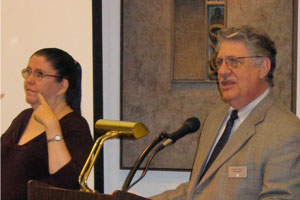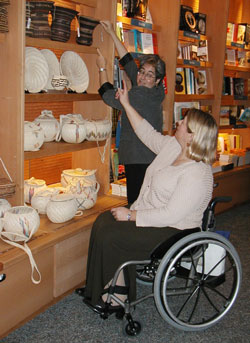Maintaining Accessibility in Museum Programs
Once inside the building, visitors with disabilities want to fully experience all that museums have to offer – exhibitions, programs, special events, publications, and videos. The following are examples of typical museum program maintenance issues:
-
Staff and volunteers working at the information desk or answering questions by telephone should know what accessibility services are available and how to request them, including those that must be scheduled in advance.
-
If the museum advertises a TTY number for information, staff and volunteers need to know how to correctly answer and use the equipment. They should also know about the telephone relay system for people who are deaf, hard of hearing, or have speech disabilities and be prepared to use it correctly.
-
Signage and information in brochures about accessibility must be kept current and available upon request.
-
Alternate formats for printed brochures and program materials (e.g., Braille, CD-Rom, large print) must be kept current, in stock, and easy to find by the public. Generally they should be available to visitors on the same day that the standard print versions are available, including materials associated with traveling and other temporary exhibitions.
-
Auxiliary aids and services (e.g., assistive listening devices, audio description tours, closed captioning controls in exhibitions) must remain operable except for maintenance or repair. Regular testing of equipment is essential to keep them in working order.
-
If touchable objects are used to provide access to the content of exhibitions and programs for people with disabilities, care should be taken to maintain the objects' condition. If an object is removed from the tactile collection for any reason, it should be replaced with one of equal quality that conveys tactually the same information about the exhibition or program's themes.
-
If the museum offers a public website about its exhibitions and programs, the information should be available to everyone, using methods such as screen-reader-accessible web design, adjustable font and color contrast, and high-contrast images. In addition, if the museum uses the website to present accessibility information or to serve as an alternate format for exhibition labels or printed materials, the information should be current and easy to find on the site.
Accessibility enables all visitors to participate in an enriched museum experience. Investing in access - and maintaining that investment - brings museums the valued rewards of inclusive programming and a new, diverse audience.



User Comments/Questions
Add Comment/Question